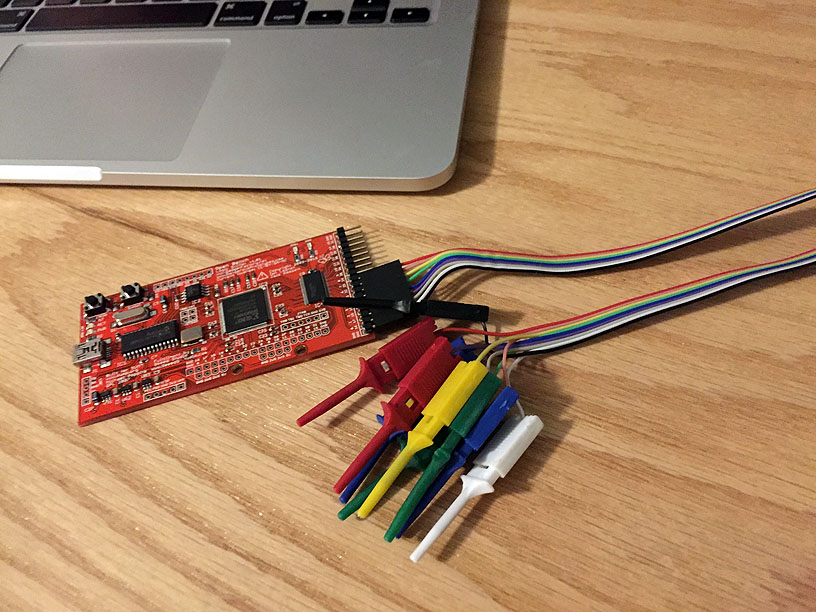Learning I2C Communications with Open Bench Logic Probe
My ongoing clock project needed a good time source. The clock is a simple project built from scratch using an ATMEL AT89C2051 microcontroller. It is a modernized variant of the Intel 8051 controller (MCS-51) using flash. The best part is the low pin count and compatibility with open source tools. The bad part is I was trying to use internal timer registers to track time and in a 24 hour period it was very difficult to get the time to stay accurate.
I have been writing the firmware in C and compiling it with SDCC. Then using a chip programmer to write the firmware to the AT89C2051.
The clock is a simple circuit with 4 seven segment displays on a circuit board I created in EagleCAD. I used Sunstone’s PCBExpress service to make a few prototype circuit boards using the output files from EagleCAD.
To work out the timing for bit-banging I2C to set and read the DS1307 I needed some better idea of what the communications looked like than what the data sheet for the DS1307 had. So I connected one to a BusPirate and used a logic probe to capture the signals. The logic probe I used is the Open Bench Logic Sniffer with the OLS Java Client.
After getting some good captures of a working I2C configuration I was able to write the C firmware for the AT89C2051 to create similar communications. The next work is to make a new circuit board in EagleCAD and get a few prototypes made.
Screenshots of I2C Transactions
OLS Java Client Screenshots from samples captured while using BusPirate to communicate with the DS1307 I2C RTC.
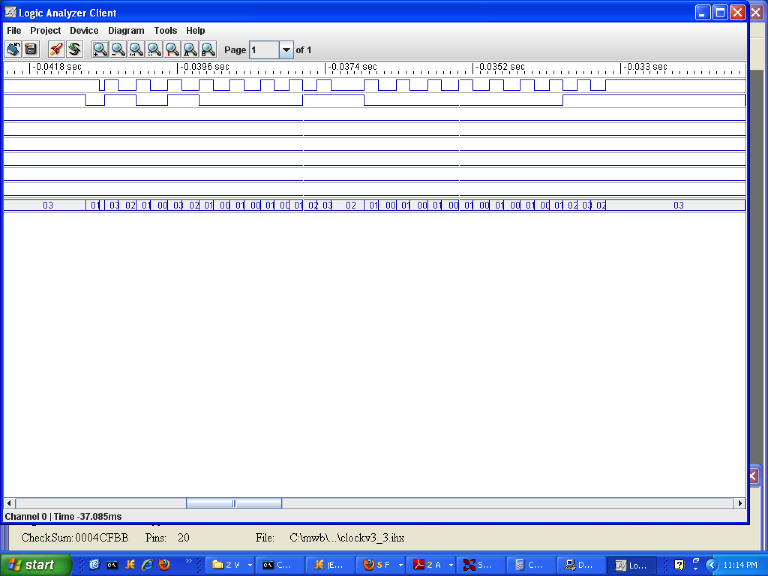
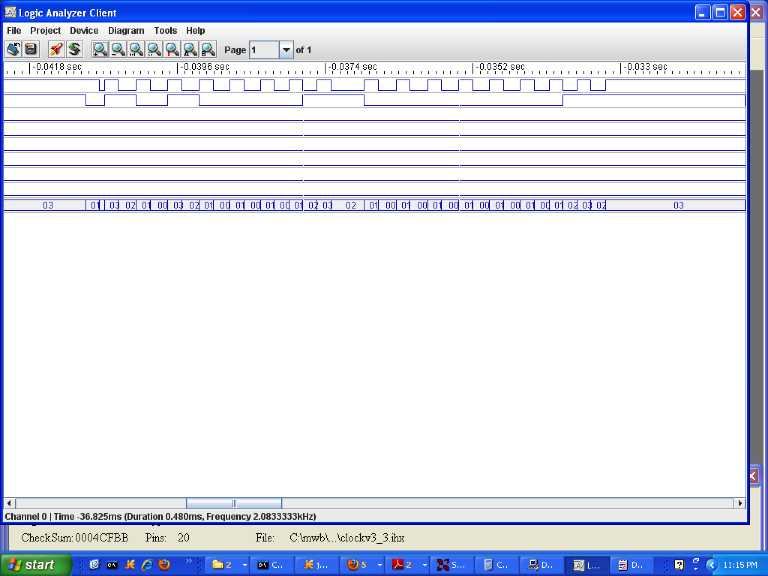
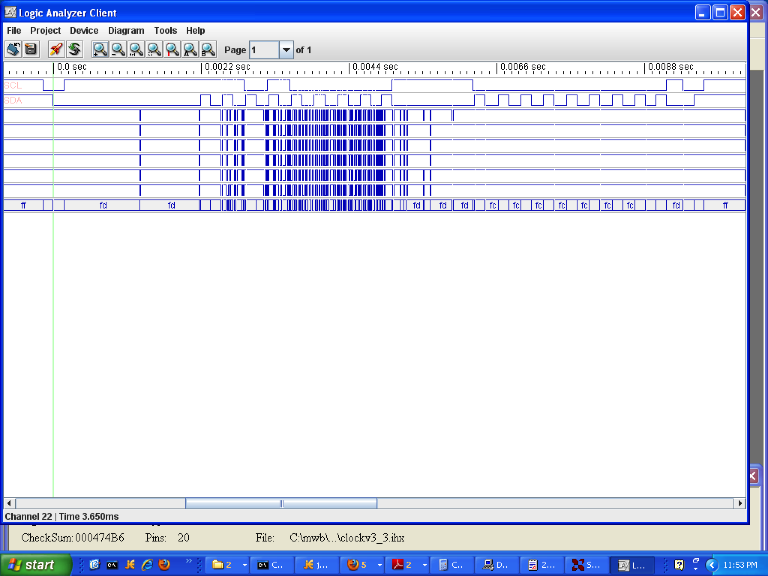

Bus Pirate
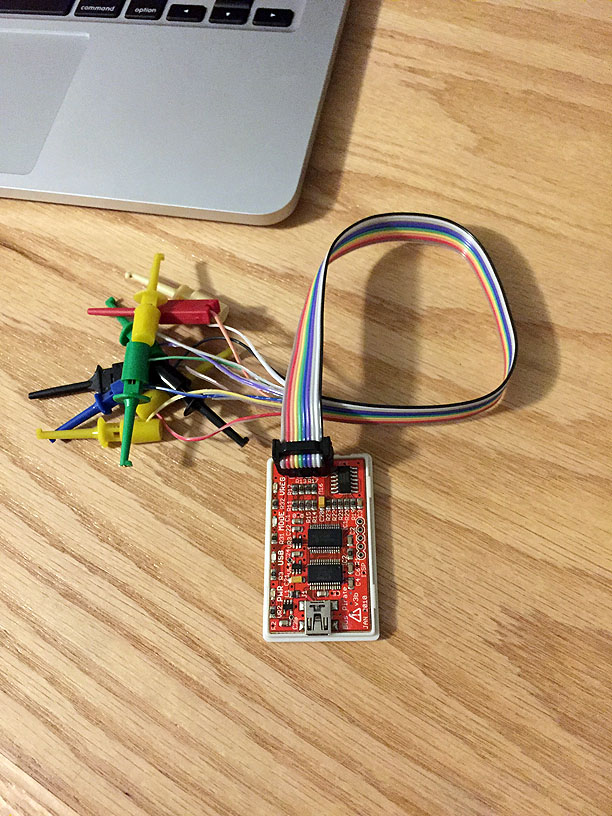
Open Bench Logic Sniffer
